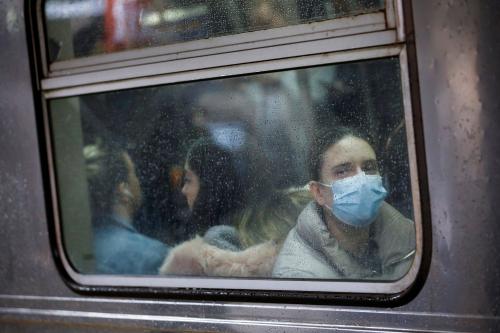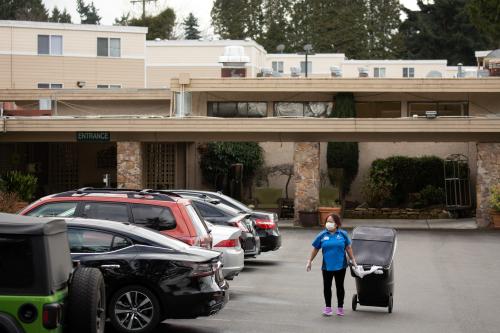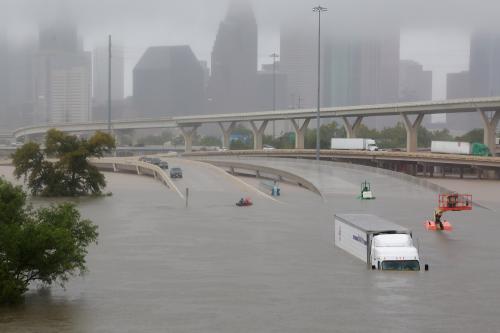I was a professor in New Orleans when, in 2005, Hurricane Katrina forced months-long shutdowns on local college campuses. Being out of the office was difficult, but I had networks and funds that enabled me to evacuate the city safely. For many students, however, the decision to close colleges and universities—while perhaps unavoidable—compounded the disaster.
Today, as we face the COVID-19 pandemic, an increasing number of higher-education institutions are again closing their campuses. While this may help contain the spread of the coronavirus, vulnerable students are now being put at risk in an entirely different way.
Elite private institutions such as Harvard University and New York University, along with several public university systems, have responded to the threat by cancelling classes and switching to online instruction. Students on spring break or getting ready to leave for it have been told to stay away for the coming weeks; the highly contagious virus would certainly flourish in the close quarters of campus dormitories, classrooms, and recreational facilities.
Like a hurricane, COVID-19 may be “colorblind,” but people affected by manmade disasters such as underfunded schools, segregated housing, and employment discrimination will be impacted more severely.
With that in mind, closing campuses isn’t a surprising choice. However, it doesn’t necessarily move vulnerable people out of harm’s way. One of the most durable memories I have of Hurricane Katrina is my realization that many students forced to flee could not afford to return. Evacuating a city requires resources like a car, gas, food, money, and a place to go. Students in New Orleans needed resources to return to normalcy. But when racial wealth gaps are the norm, a stumble can become a fall.
The same will be true of students searching for a safe place to escape the coronavirus. Like a hurricane, COVID-19 may be “colorblind,” but people affected by manmade disasters such as underfunded schools, segregated housing, and employment discrimination will be impacted more severely.
The solution is just as clear as the problem: Colleges and universities should not take a colorblind approach to this colorblind virus. Institutions should make room on their campuses for vulnerable students who don’t have the resources to jet off to safety. Some schools, including the University of Chicago and George Washington University, are doing just that. Other campuses should also allow students to stay if they have nowhere else to go.
Institutions should make room on their campuses for vulnerable students who don’t have the resources to jet off to safety.
The reporting on university closures has focused mainly on exclusive four-year institutions that tend to serve more privileged populations. But many public and community colleges are closing, too, and at these institutions, the majority of students have very different backgrounds. Campus leaders must remember that the racism and classism that put Black, brown, and low-income people at risk for dropping out of college also make them vulnerable to contracting COVID-19.
For instance, students who have insecure housing—maybe they’ll be forced to couch surf or live in a shelter after dorms close—will be at greater risk for contracting and spreading the virus. This is true for many students outside of the ivy-covered halls of the elite colleges: Researchers of the Wisconsin HOPE Lab reported in 2017 that two-thirds of students at American community colleges have difficulty paying for food, about half struggle to find stable housing, and some 13% are homeless. For these students, colleges offer their most stable sources of food and shelter. When colleges close, students will lose the community connections that provide them with a place to stay and a meal to eat.
When my campus closed after Hurricane Katrina, most faculty were still able to get paid and cover their rent or mortgage thanks to direct deposit. However, many students enrolled in work study—which helps pay tuition and housing costs—did not get paid in the aftermath, even though they had to finish their coursework. Without a check, they could not meet expenses.
Keeping vulnerable students enrolled and engaged in coursework when campuses close is just as challenging. Elite institutions with power and resources will have an easier time serving students through advanced online classes and connections. But as I saw at the budget-slashed University of New Orleans over a decade ago, underresourced institutions will have great difficulty with such technical offerings in the middle of a semester.
When forced off campus, students who are more likely to drop out—first-generation collegians, low-income students, and students of color—may never come back.
The value of a physical campus is that students are more likely to stay engaged because they are members of a community. Faculty who don’t practice in a virtual environment can’t easily replicate that sense of community in an online chat room. When forced off campus, students who are more likely to drop out—first-generation collegians, low-income students, and students of color—may never come back.
An estimated 100,000 students were displaced by Katrina after the levees failed. The number of students impacted by coronavirus closures will be exponentially higher. College and university leaders must ensure their shutdown plans are guided by the fact that campuses are more than just places of learning—for the most vulnerable, they are real homes.






Commentary
Hurricane Katrina provides lessons about closing campuses during the coronavirus crisis
March 16, 2020